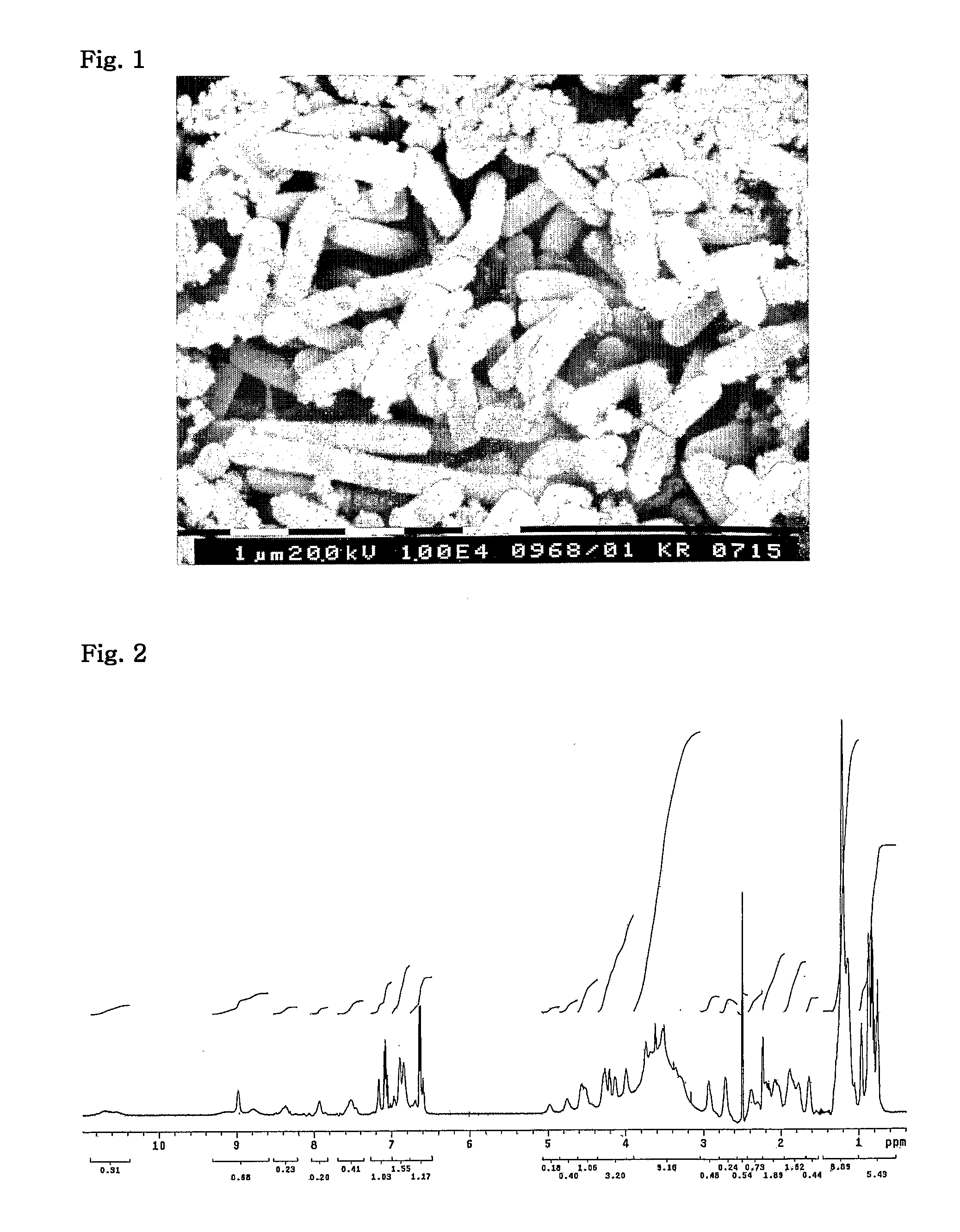Novel Bacillus Amyloliquefaciens Ktgb0202 and Control Method of Plant Pathogenic Fungi Using That
a technology of amyloliquefaciens and microorganisms, which is applied in the direction of enzymology, biocide, bacteria based processes, etc., can solve the problems of limited use of agrochemicals, carcinogensis, malformation and various diseases of the human body, and the limitation of the effect of controlling plant diseases only by chemical treatment methods
- Summary
- Abstract
- Description
- Claims
- Application Information
AI Technical Summary
Benefits of technology
Problems solved by technology
Method used
Image
Examples
example 1
Isolation and identification of Bacillus amyloliquefaciens KTGB0202 Bacteria
[0034]The leaves of oak trees growing naturally on hills in the vicinity of KT&G Central Research Institute located at Shinsong-Dong, Yusong-Ku, Taejon, Korea, were collected.
[0035]The collected leaves were washed with water, dried in air, surface-sterilized with 1% sodium hypochlorite, sufficiently ground with a pestle and mortar, and diluted in distilled water.
[0036]The dilution was plated on Mueller Hinton agar medium using the bilayer method, and cultured in an incubator at 27° C. for 2-3 days. Then, a single bacterial colony was purely isolated by several subcultures.
[0037]The identification of a strain for the single isolate was performed by morphological observation and the analysis of physiological characteristics, cell fatty acids and 16S rDNA base sequences.
[0038]This strain grows well in nutrient agar medium, potato sucrose agar medium and Mueller Hinton agar medium. Also, it does not form special...
example 2
Culture of Bacillus amyloliquefaciens KTGB0202 Strain
[0045]The Bacillus amyloliquefaciens KTGB0202 strain of Example 1 was prepared.
[0046]A Mueller Hinton agar medium was prepared.
[0047]21 g of the prepared Mueller Hinton agar medium was dissolved well in 1 liter of distilled water, and the solution was dispensed into 500-ml erlenmeyer flask at 200 ml each time, and sterilized in 1.5 atms at 121° C. for 20 minutes.
[0048]The KTGB0202 bacteria in a plate state was taken by a platinum wire and inoculated into the prepared medium. The inoculated bacteria were cultured at 27° C. for 4 days with shaking at 110 rpm.
[0049]The culture medium showed a weak yellow color, was viscose, and had a pH of 6.79.
example 3
Isolation and Purification of Antifungal Substance KTGB0202-AF01 Produced by KTGB0202 Bacteria
[0050]The Bacillus amyloliquefaciens KTGB0202 bacteria-containing culture of Example 2 was prepared.
[0051]The prepared culture was passed through a glass column filled with Diaion-HP10 resin.
[0052]The antifungal substance adsorbed onto the column was extracted with 70% aqueous acetone and concentrated.
[0053]The concentrated substance was dissolved in a small amount of chloroform (CHCL3) and methanol (MeOH) and subjected to silica gel column chromatography.
[0054]While gradually increasing the polarity of the solvent system from 7:3 to 0:1, the active substance was developed to purify a substance showing the strongest activity at a polarity range of 3:7 to 1:9.
[0055]The purified substance was concentrated under reduced pressure, dissolved in a small amount of methanol, and finally purified by LH-20 (Sephadex LH-20) gel chromatography using the same solvent as a developing solvent.
[0056]The fi...
PUM
 Login to View More
Login to View More Abstract
Description
Claims
Application Information
 Login to View More
Login to View More - R&D
- Intellectual Property
- Life Sciences
- Materials
- Tech Scout
- Unparalleled Data Quality
- Higher Quality Content
- 60% Fewer Hallucinations
Browse by: Latest US Patents, China's latest patents, Technical Efficacy Thesaurus, Application Domain, Technology Topic, Popular Technical Reports.
© 2025 PatSnap. All rights reserved.Legal|Privacy policy|Modern Slavery Act Transparency Statement|Sitemap|About US| Contact US: help@patsnap.com


